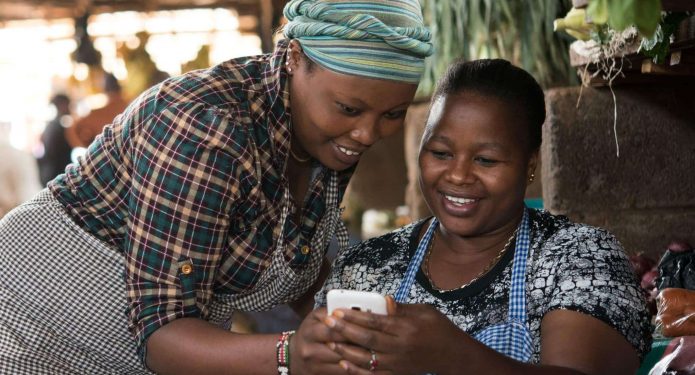Blog
Our blog posts are for information sharing only. The contents may not represent our company or clients. We take no responsibility for its application, validity, accuracy or reliability.
Delivering Innovation in a Developing Economy

As a prerequisite to economic growth and development, the World Bank Group identifies innovation as the system that creates new products and devises new uses for existing ones. Delivering innovation in a developing economy is a complex undertaking, requiring a systematic approach that is both smart and scalable.
Innovation initiatives succeed when governments are able to leverage existing expertise to increase productivity and stimulate new business. Beyond technology success stories like Silicon Valley, there are numerous examples where societies have invested heavily in building innovation platforms but have failed to realise the desired benefits. The war for innovation is not won by building a technology park or some other physical structure. If only it were that simple.
A tried and tested innovation roadmap for Sub-Saharan Africa is not yet in existence— and this is likely to be the case for another few years— but there are lessons learnt from other economies that can be employed. In our experience, governments and organisations can accelerate innovation by leveraging existing know-how and adapting existing technologies. As explained by Michael Porter’s theory of innovation clusters, government should invest in the pre-existing pockets of innovation in their societies. These clusters affect society and increase the productivity of participating players by driving innovation directly in the field and stimulating new business. In such instances, innovation will enhance the efficiency of existing input usage.
In the technology space, the rise of African innovation has inspired thousands of new startups. In the decade where mobile money first sparked international interest, hundreds of tech hubs have sprung up across the continent. Companies like GE have rushed to build innovation centres and the venture capital industry has grown steadily. The $1 billion available in venture capital funding has helped support the current pan-African technology renaissance. GSMA research reveals that there are 314 active tech hubs in Africa and at least 3,500 new tech-related ventures.
Across the continent, large global seed funds and startup accelerators are backing some of the more established startups. Tech giants like Google have established an African presence and successfully launched programs aimed at developing tech talent. Zuckerberg himself made his first visit to Sub-Saharan Africa in August 2016 confirming that Africa is transitioning from the margins of digital innovation to a more mainstream position.
Much of the gains recorded in African innovation have been largely organic and arguably even accidental. Efforts of government to architect innovation has not been as successful. From Nigeria to Mozambique, ghost projects touted as Africa’s “first” or “biggest” innovation cities litter the continent’s landscape like dead monuments in the dusk.
Lessons from History
Innovation is a marathon and not a sprint. From the 1930s onwards, Silicon Valley slowly spun out of the academic community in Stanford University and this is the case for a large number of innovation ecosystems around the world. Successful innovation requires slow organic growth and plenty of patience.
Between 2007 and 2010, Kenya laid down four markers that contributed to its innovation transformation: M-Pesa, the mobile money behemoth; Ushahidi, a globally recognised crowdsourcing app; iHub, a tech incubator; and a genuine government commitment to ICT policy. This policy resulted in the completion of The East African Marine System undersea fibre optic cable project. These big wins ultimately paved the way for the establishment of Kenya’s ICT Authority.
Nigeria’s hotbed of innovation is located in the Yaba area of Lagos. Its early years were sustained by three main factors- the concentration of a young educated community comprising of students from Yaba College of Technology and the University of Lagos, availability of cheap office space, and uncapped internet access.
The emergence of Yaba as a tech powerhouse began in 2012, when Co-creation Hub, MainOne, Technovision and the Lagos State Government began to coordinate efforts to stimulate a community around the tech startups. This provided uncapped internet, relatively stable electricity and other key elements to help the startups thrive. The project, dubbed Yaba i-HQ kicked off in 2013 when the Lagos State Government waived right of way impediments, allowing MainOne to deploy a 27-km fibre optic cable network surrounding the Yaba axis.
There are now roughly 450 startups located in the Yaba and Lagos Mainland area; each with an average team strength of six people. Two to four startups typically share small office space with communal utility costs and flexible work schedules proving that large unwieldy structures that are disconnected from community are not necessarily an ingredient for success.
Delivery How-to
Government’s approach to delivering an innovation ecosystem must be market-led but people-focused, with a high degree of expert stakeholder participation. It must employ unconventional and creative strategies to exploit innovation as a tool for economic growth and social development. Governments of developing economies can utilise innovation and technology as vehicles for transforming ideas into viable commercial products. Innovation can also be employed to address social challenges such as youth unemployment, water shortage and food scarcity.
Rob Taiwo, Managing Director at Phillips Consulting (PCL), believes that government must play the lead role in ensuring innovative ecosystems thrive. “Government should create a single innovation vision, build strong trust relationships and tackle the question of intellectual property early in the process. They should design a strategy that enables innovation leadership in their region.”
For innovation delivery to the public, it is recommended that government should adopt a customer delivery framework using a service model approach. They should commit to an innovation funding model which is encompassed in a strong set of financial governance principles. In addition, an ethical governance culture with structured control processes, plus stage gates for funding startups, will contribute to the success of any innovation ecosystem.
A successful innovation system must comprise of government, private sector stakeholders and collaborative partners who together form a scalable co-operative system. An embedded institutional framework provides funding, knowledge, research, infrastructure and policy expertise. Oluwaseun Ngonnase, Senior Partner in PCL’s Technology practice, added that an innovation portal which serves as a core channel for delivering public innovation services and communications is key.
Conclusion
Innovation is critical for economic growth, but it is also becoming increasingly important for addressing major development challenges. Developing economies are now paying closer attention to employing innovation as a tool to alleviate poverty and stimulate growth. Extracting the value of innovation requires a central vision, targeted government investment and considerable patience.
In summary, in developing economies, governments must take the lead in developing the structures to promote and stimulate innovation. They must develop collaborative ecosystems to harness new ways of working and absorb emerging technologies. They must find and support entrepreneurs who can take risks, attract private sector financing, and commercialise ideas into new products and services.
By Philips Consulting
From Tech Cabal: http://techcabal.com/2017/12/06/delivering-innovation-in-a-developing-economy/



Leave a Reply